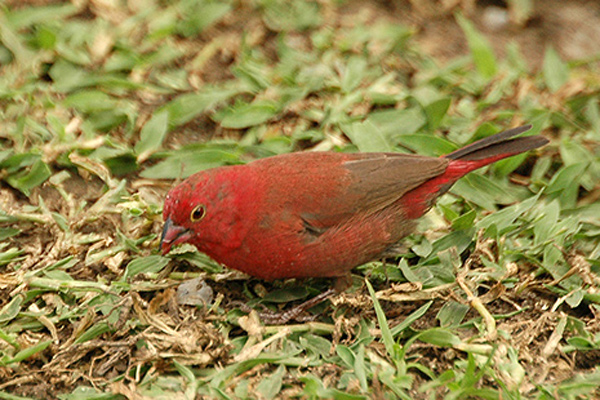Facts About Red-billed firefinch
The red-billed firefinch, also known as the Senegal firefinch, is a charming little bird native to most of Sub-Saharan Africa. With a wide range spanning approximately 10 million square kilometers, it is a common sight across this vast region. Interestingly, the species was once introduced to Egypt, although that population did not endure. Currently, it is expanding its range into southern Algeria.
The bird was first described by Mathurin Jacques Brisson in 1760 and was subsequently classified by Carl Linnaeus in 1766 under the name Fringilla senegala. Today, it is placed in the genus Lagonosticta. There are six recognized subspecies of the red-billed firefinch.
Adult male red-billed firefinches are particularly striking with their scarlet plumage, pink bills, and yellow eye-rings. In contrast, females have brown upperparts and buff underparts with some red patches. These birds are relatively small, measuring about 10 cm (3.9 inches) in length.
You will often find these birds around human habitations, and they are known for their distinctive calls and songs. They are social creatures, typically seen in groups, and they primarily feed on grains and seeds found in open grasslands and cultivated areas.
When it comes to nesting, red-billed firefinches construct large, domed grass structures with side entrances. These nests are usually located low in bushes, walls, or thatched roofs. They typically lay between three to six white eggs. However, they must be vigilant for the village indigobird, which is notorious for parasitizing their nests.
Additionally, the red-billed firefinch often associates with other bird species, such as the red-cheeked cordon-bleu, creating a lively and colorful community in their habitats.

 Togo
Togo